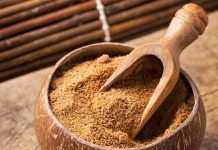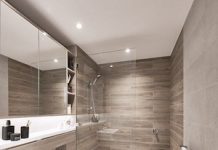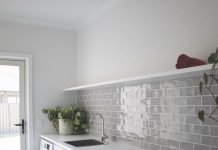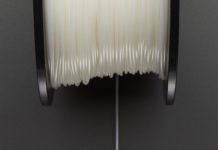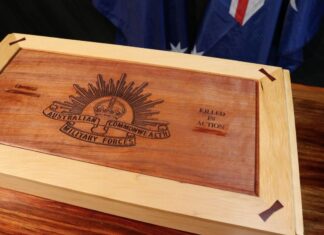
Gyms are very busy places where there’s a lot of foot traffic. Additionally, dropping plates and weights and different fitness activities can damage the floors very soon. So, it’s very important to choose the right flooring. Several types of floors are suitable for this environment and they all have their pros and cons.
Types of Gym Flooring

Jigsaw Mats
This type of gym flooring is also known as puzzle mats. They’re smaller pieces that interlock together to fill an area. Besides being suitable for the gym, they’re also good for yoga studios. These mats are an affordable flooring solution to create a safe and comfortable training area for your clients. Plus, you can arrange them on your own and save some money on installation.
When choosing a durable and practical jigsaw mat, the most important thing to consider is the material. The majority of them are made of ethylene vinyl acetate or EVA. This is an elasticised foam with closed-cell construction that has great shock absorbency and cushioning.
When it comes to size and shape, they’re usually square-shaped and come in 1mx1m dimensions. This way you can easily cover and size the floor. The thickness is another important consideration. It has an impact on the CFH or the critical fall height and its firmness. Choosing the thickness depends on the mat’s purpose.
For karate or kickboxing, you’ll need 2cm of thickness. For judo or jiu-jitsu, where falling is harder and more common, you can buy a mat that’s 3.5-4cm thick. The mat’s texture can vary from very smooth to heavily textured. The textured ones provide more grip for striking and standing martial arts. Smoother surfaces are better when there’s a lot of grappling. They will prevent surface burns.
These mats come in many colours and designs, red, blue, green, black, white, grey and many more. You can use all of these choices to visually separate every area in your gym and create borders between separate spaces. To get a more cohesive look, you can match the colour of the mats with the colour of your logo.
Installing the mats is not complicated and you can do it on your own. Start in one corner and work your way inwards. Make sure there’s a 0.5 gap between the mat and the wall. As you connect them together secure them so they won’t separate and fall apart. In case they don’t fit at the end of the room, use a utility knife to trim them down.
Vinyl
Vinyl is perfect for gym owners who want to add a colourful visual to the space. Vinyl is a great choice because it’s extremely durable and can withstand a lot of wear and tear from slips, kicks, bumps from weights and strain. It’s also oil, chemical and stain-resistant which is perfect for gyms.
Just like a jigsaw mat, vinyl mats are easy to clean. They’ll be spotless with just mild soap and warm water. Give them an occasional wash and you’re good to go. Both vinyl tiles and rolls are easy to install and you can do it yourself. Plus, you can easily personalise the floor because of the many colour and design options.
Rubber Tiles
Rubber tiles are a popular choice for garages and home gyms since they’re a cost-effective solution and can endure heavy usage. They are available in interlocking puzzle-piece shapes and are ideal for small exercise areas. Rubber rolls have antimicrobial, noise-reducing, cleansing, and shock-absorbing qualities.
Rubber tiles are easy to install and don’t need any type of adhesion. They’re lightweight and easy to lift. They also come in many colours and patterns and can liven up an area by just being there. The only disadvantage is that they can cost more than rubber rolls.
Rubber Rolls
Rubber rolls are great if you don’t want to have a lot of surface gaps. They create a smooth training zone and minimise joint exposure. These rolls are super durable and easy to clean. They also have great shock-absorbing properties. They’re also germ-resistant and keep a certain level of cleanliness. And probably the best thing ever, they have great noise reduction.
Turf
Even though turf flooring is very common in fitness centres, it’s growing more and more popular and gym owners install it as a floor covering. Just like foam jigsaw mats, turf is safe, durable and has very good cushioning. Some gym owners combine it with rubber for a safer workout environment.
Foam
Foam mats are great as gym flooring because they’re shock-absorbent, have good cushioning and are soft. They come in several thicknesses and colours and are fairly cheap. Foam is not as durable as vinyl or rubber but it’s good for smaller areas.
Other Things to Consider

Activities
Your daily activities will directly influence the flooring choice – if you’re doing high-impact workouts or strength training, you need something thicker that has shock-absorbing properties. Something to protect people’s feet and also reduce noise levels.
Available Space
The kind of space you have and its state should be your next consideration. Is it a home gym or a commercial facility? How does your current subfloor look, and is levelling necessary? What financial effects would that have on your budget? You can think about all of these aspects to make the right choice.
Maintenance
Having gym flooring that’s simple and easy to clean and maintain is a must. Gyms aren’t the dirtiest places on earth but they should be as clean as possible. Some flooring options need more upkeep than others and some need special cleaning supplies and methods. Choose the one that’s most suitable for you and your gym.
Colour and Design
The colour and design of the flooring can have a big influence on the overall feel of the gym. Many gym owners go for darker tones like black and grey but if you want to add something brighter go for it. It’ll cheer up the space, show your personal style and give the gym a jolly and welcoming atmosphere.



